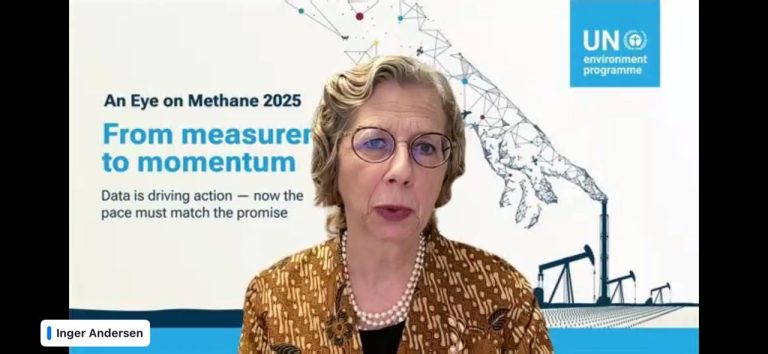Jakarta — Efforts to curb methane emissions are gaining momentum as governments and companies increasingly respond to data-driven alerts. Still, progress remains far too slow to meet global climate goals, according to a new report by the UN Environment Programme (UNEP), the UN body said on Wednesday, October 22.
The fifth edition of UNEP’s An Eye on Methane: From Measurement to Momentum finds that responses to methane “super-emitter” alerts, issued by UNEP’s Methane Alert and Response System (MARS), have jumped more than tenfold, from one to 12 per cent in the past year. Despite this improvement, nearly 90 per cent of the over 3,500 alerts sent to 33 countries since 2022 have gone unanswered.
“Reducing methane emissions can quickly bend the curve on global warming, buying more time for long-term decarbonization efforts,” said UNEP Executive Director Inger Andersen. “But to keep the Paris Agreement targets within reach, the important progress on reporting must translate into cuts to emissions.
Methane, the second-largest driver of global warming after carbon dioxide, is responsible for about one-third of the global temperature rise. Under the Global Methane Pledge, countries have committed to reducing emissions by 30 per cent by 2030.
Industry progress and transparency
UNEP’s International Methane Emissions Observatory (IMEO) highlights major progress through its Oil and Gas Methane Partnership 2.0 (OGMP 2.0), the world’s leading standard for methane emissions measurement and mitigation.
The partnership now counts 153 companies across 42 per cent of global oil and gas production, more than double its membership five years ago. About one-third of global production is now being measured using real-world data, with 65 companies (17 per cent of global output) achieving the programme’s Gold Standard and another 50 companies (15 per cent) on track to do so.
This growing transparency, UNEP says, provides the foundation for effective regulation, including in the European Union, the world’s largest energy-importing market.
IMEO is scaling up its Steel Methane Programme, which targets emissions from metallurgical coal used in steelmaking, a sector responsible for a quarter of the steel industry’s climate footprint.
The initiative will launch a Steel Methane Transparency Database to consolidate satellite data, empirical studies, and industry reporting. UNEP notes that abatement options such as oxidation and drainage systems could mitigate these emissions at just one per cent of steel production costs.
The MARS platform, meanwhile, is being extended to coal mines and waste sites, sectors with significant but under-measured methane potential.
IMEO has supported 46 peer-reviewed studies across six continents, improving global methane data and testing new measurement technologies. It is also developing baseline estimates for methane from rice and livestock, two major agricultural sources.
Despite growing transparency and cooperation, UNEP stresses that stronger, faster action is essential to meet the 2030 methane reduction target. “Every company should join the Oil and Gas Methane Partnership 2.0, and both governments and operators must respond to satellite alerts – then they must act to reduce emissions,” said Andersen. (nsh)
Banner photo: UNEP Executive Director Inger Andersen in a press conference on Wednesday, October 22, 2025. Source: UNEP Webcast screencapture.














